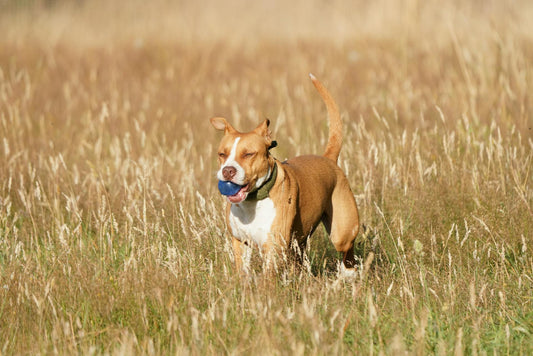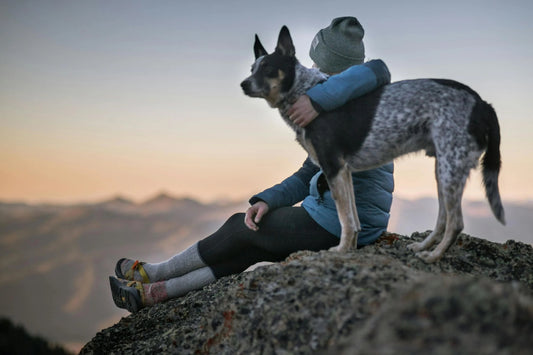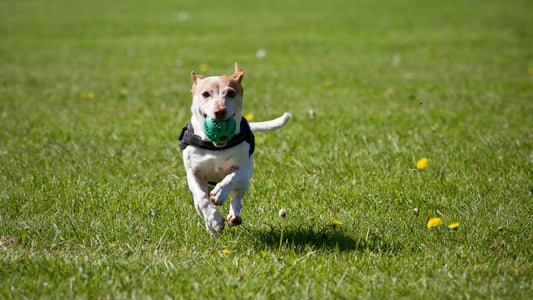As the temperature rises, keeping a dog active can present a unique challenge. For optimal health and happiness, it's essential to adapt exercise routines to prevent overheating while still providing mental and physical stimulation. Dog owners can utilize early mornings or late evenings for walks and explore water-related activities to keep their pets engaged without overexerting them.
Making use of shaded areas in the yard or opting for indoor activities can also be effective strategies. Interactive toys, agility training, or even puzzle games can provide excellent mental stimulation for dogs. Owners should always monitor their pets for signs of heat stress and adjust activities accordingly to ensure a safe and enjoyable experience.
Monitoring hydration is crucial during warmer months. Fresh water should always be readily available, especially after exercise. By implementing these practices, pet owners can facilitate a vibrant, active lifestyle for their dogs, even in the heat.
Understanding the Effects of Heat on Dogs
Heat can have significant effects on dogs, impacting their health and behavior. Recognizing the signs of heat stress and understanding how dogs regulate their body temperature is crucial for keeping them safe during warm weather.
Recognizing Heat Stress in Canines
Heat stress occurs when a dog's body cannot regulate its temperature effectively. Recognizing the symptoms is vital for timely intervention. Key signs include:
- Excessive panting: Rapid breathing without relief.
- Increased heart rate: Noticeably faster heartbeat.
- Weakness or lethargy: Reduced energy and activity levels.
- Drooling: Unusual and excessive saliva production.
- Vomiting or diarrhea: Gastrointestinal distress can occur.
If a dog displays these signs, it is essential to move them to a cooler environment and offer water. Prolonged exposure to heat can lead to heatstroke, which is life-threatening.
The Canine Body and Temperature Regulation
Dogs primarily regulate their body temperature through panting. Unlike humans, they have fewer sweat glands, making them less efficient in dissipating heat.
During hot weather, their normal body temperature ranges from 101°F to 102.5°F (38.3°C to 39.2°C).
A dog's ability to cool down diminishes in high humidity or extreme heat. The following factors can worsen heat effects:
- Breed: Breeds with flat faces (brachycephalic) struggle more.
- Age: Puppies and older dogs often have less resilience.
- Weight: Overweight dogs face higher heat risks.
Monitoring these factors helps ensure a dog's safety in warmer conditions.
Essential Tips for Keeping Your Dog Cool
Keeping a dog cool during hot weather is essential for their health and well-being. Implementing effective strategies can prevent overheating and promote comfort.
Hydration and Shade
Hydration is crucial. Dogs should have access to fresh, cool water at all times. It’s advisable to carry a portable water bowl during walks and ensure they drink frequently.
Shade is equally important. Providing a shaded area in the yard or on a patio can help reduce heat exposure. Awnings, large umbrellas, or trees are effective options.
When necessary, dogs should be brought indoors during peak heat hours, usually between 10 a.m. and 4 p.m. Ventilated spaces can allow for natural cooling. Monitoring your pet’s behavior is vital. Signs of dehydration or overheating should be addressed immediately.
Active Engagement in the Heat
Keeping dogs engaged during hot weather requires careful planning to ensure their safety and well-being. Timing activities appropriately, considering alternative indoor options, and incorporating water-based fun can help maintain their activity levels while avoiding heat-related issues.
Timing and Duration of Activities
Choosing the right time of day for walks or play is crucial. Early mornings or late evenings are often cooler, providing a safer environment for exercise. Sessions should be limited to 15-30 minutes depending on the temperature and the dog's breed.
Monitoring the dog closely during these activities is essential. Signs of overheating include excessive panting, drooling, or lethargy. If any of these signs appear, it's important to stop the activity immediately and provide water and shade.
Indoor Exercise Alternatives
Indoor activities can effectively keep dogs stimulated without exposure to the heat. Games like hide-and-seek or tug-of-war engage both mental and physical faculties.
Interactive toys, such as puzzle feeders, challenge dogs and prolong their engagement. Simple training sessions can also be a good way to mentally exercise a dog while keeping them cool indoors.
Consider setting up an indoor obstacle course using furniture or available space. This encourages movement and can be a fun bonding experience.
Water-Based Activities
Water-based activities can provide excellent exercise while keeping dogs cool. Swimming is one of the best options, as it allows dogs to burn energy without risking overheating. Always supervise them in the water for safety.
If a pool isn’t available, sprinklers or kiddie pools can offer similar enjoyment. Allow dogs to splash and play in shallow water, which can be refreshing and entertaining.
Incorporating fetch games using water toys can also keep the experience lively. Utilizing these activities provides a chance for both engagement and cooling down simultaneously.
Monitoring and Responding to Heat Exposure
Being proactive when monitoring a dog's heat exposure is crucial for their safety. Recognizing signs of overheating and knowing how to respond can prevent serious health issues. Regular checks, first aid techniques, and knowing when to consult a vet are key components in ensuring a dog's well-being in hot weather.
Regular Health Checks
Frequent health checks are essential to ensure a dog is coping well with the heat. Key areas to monitor include:
- Body Temperature: Normal canine body temperature ranges from 101 to 102.5°F. Use a digital thermometer for accurate readings.
- Panting: Excessive panting may indicate overheating. A dog should not pant heavily after just a brief exercise session.
- Behavior Changes: Lethargy, a lack of appetite, or sudden behavioral shifts can signal distress. Monitoring a dog's activity level during hot days is important.
Routine health checks should be performed, particularly after each outdoor session. If any signs of discomfort arise, it is wise to take immediate action.
First Aid for Overheating
In cases of overheating, quick and effective first aid can save a dog's life. Follow these steps:
- Move to a Cool Area: Immediately relocate the dog to a shaded or air-conditioned place.
- Provide Water: Encourage them to drink cool, fresh water, but avoid forcing it.
- Cool Down Gradually: Use cool (not cold) water on the dog's body, focusing on pulse points like the groin and armpits. Ice packs can also be placed in these areas.
- Monitor Temperature: Keep checking the dog's temperature every few minutes. If it doesn't drop below 103°F, continue cooling efforts.
Being swift and attentive can make a significant difference in recovery.
When to Seek Veterinary Care
Veterinary care is necessary when a dog's condition worsens or does not improve after first aid. Specific signs to watch for include:
- High Body Temperature: If the temperature exceeds 104°F, professional help is crucial.
- Persistent Vomiting: Vomiting after hydration efforts can indicate severe heatstroke.
- Disorientation or Seizures: Signs of neurological distress require immediate attention.
- Unresponsiveness: If the dog becomes unresponsive or extremely lethargic, it is vital to seek veterinary help right away.
Recognizing these signs and acting quickly can prevent fatal outcomes.








